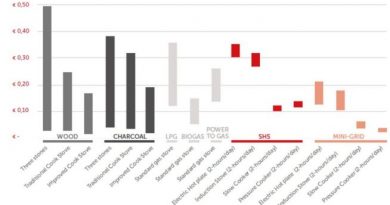Disrupting Solar Industry: Breakthrough in Perovskite Solar Cell with ‘Inkjet’ panels

The 36-year-old has developed a novel inkjet processing method for perovskites — a new generation of cheaper solar cells — that makes it possible to produce solar panels under lower temperatures, thus sharply reducing energy costs. As well as reducing the energy footprint of solar manufacture itself.
The development is called a breakthrough because it takes us a step closer to the sustainability dream to end energy poverty.
“In our opinion, perovskite solar cells have the potential to address the world energy poverty,” said Mohammad Khaja Nazeeruddin, a professor at Switzerland’s Federal Institue of Technology Lausanne, an institution on the cutting-edge of solar energy research.
Perovskite technology is on track to revolutionise access to solar power for all, given its surprising physical properties, some experts say. Solar panels coated with the mineral are light, flexible, efficient, inexpensive and come in varying hues and degrees of transparency.
They can easily be fixed to almost any surface — be it laptop, car, drone, spacecraft or building — to produce electricity, including in the shade or indoors. Though the excitement is new, perovskite has been known to science since at least the 1830s.
Polish physicist and businesswoman Olga Malinkiewicz co-founded Saule Technologies where she is CTO. The company announced its first commercial contract in BIPV with Norwegian construction company Skanska earlier last year. This has been described as the first step towards the market entrance of perovskite solar cells.
The company now has an ultra-modern laboratory with an international team of young experts and is building an industrial-scale production site.
“This will be the world’s first production line using this technology. Its capacity will reach 40,000 square meters of panels by the end of the year and 180,000 square meters the following year,” Malinkiewicz said at her lab.
Skanska will implement semi-transparent perovskite solar cells into office buildings on a commercial scale. A standard panel of around 1.3 square meters, at a projected cost of 50 euros ($57), would supply a day’s worth of energy to an office workstation, according to current estimates.
Malinkiewicz insists that the initial cost of her products will be comparable to conventional solar panels. Perovskite technology is also being tested on a hotel in Japan, near the city of Nagasaki. There are plans to start the pilot production of perovskite panels in Valais, Switzerland and in Germany under the wings of the Oxford Photovoltaics venture.








